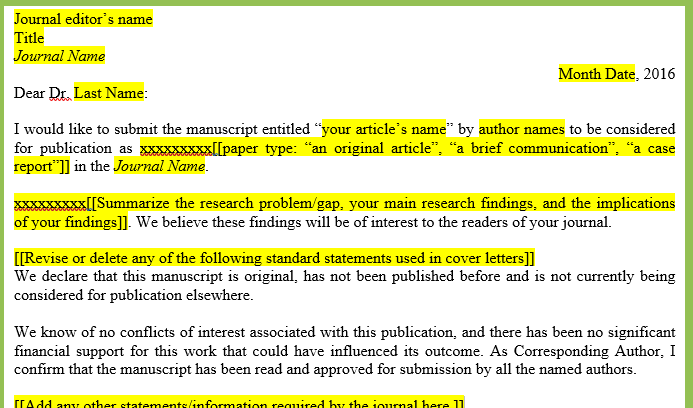Cover letters can be helpful to journal staff in the following ways.
1. Cover letters that include standard statements required by the journal allow the journal staff to quickly confirm that the authors have (or say they have) followed certain ethical research and publishing practices.
These statements assert that the authors followed standard practices, which may include (i) adhering to ethical guidelines for research involving humans (Declaration of Helsinki), involving animals (ARRIVE guidelines), or falling under institutional guidelines; (ii) obtaining ethics approval from institutional review boards or ethics committees; (iii) obtaining informed consent or assent from participants; (iv) complying with authorship criteria (e.g., ICMJE criteria); (v) confirming no duplicate submissions have been made; and (vi) recommending reviewers for your paper, which may include specifying peers that you prefer not be contacted.
2. Cover letters can summarize your manuscript quickly for the journal editor, highlighting your most important findings and their implications to show why your manuscript would be of interest.
Some journals, such as Nature, state that while a cover letter is optional, it provides "an excellent opportunity to briefly discuss the importance of the submitted work and why it is appropriate for the journal." Some publishers, such as Springer, recommend that you write a cover letter to help "sell" your manuscript to the journal editor.
3. Cover letters that contain all of the information required by the journal (as stated in the guideline for authors) can indicate that you have spent time carefully formatting the manuscript to fit the journal's style. This creates a good first impression. Addressing the letter to a named editor at the journal also shows that you took the time to write your letter (and by extension, your manuscript) with care and considered the fit with the journal beyond just impact factor.



